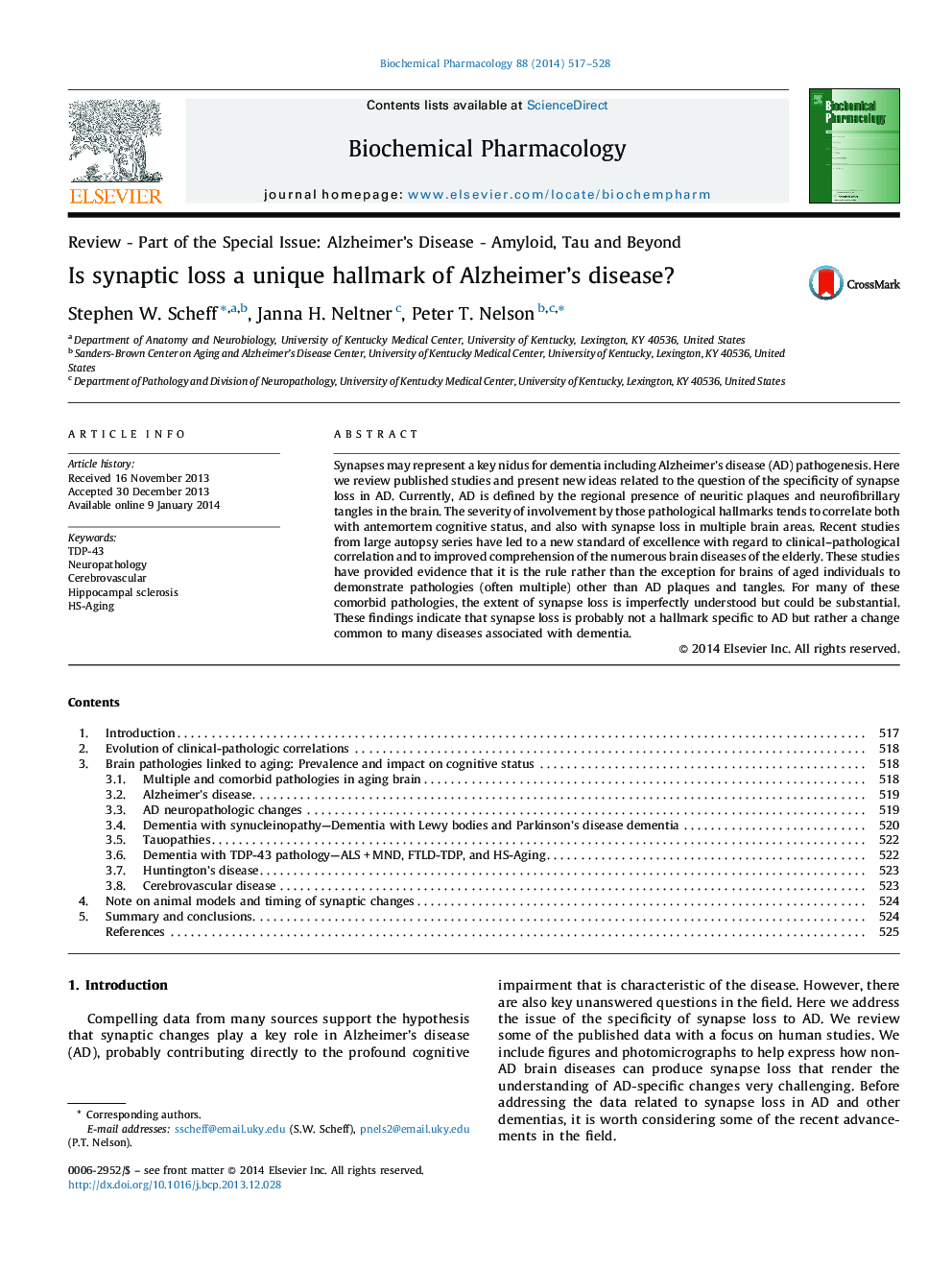| Article ID | Journal | Published Year | Pages | File Type |
|---|---|---|---|---|
| 5823574 | Biochemical Pharmacology | 2014 | 12 Pages |
Abstract
Synapses may represent a key nidus for dementia including Alzheimer's disease (AD) pathogenesis. Here we review published studies and present new ideas related to the question of the specificity of synapse loss in AD. Currently, AD is defined by the regional presence of neuritic plaques and neurofibrillary tangles in the brain. The severity of involvement by those pathological hallmarks tends to correlate both with antemortem cognitive status, and also with synapse loss in multiple brain areas. Recent studies from large autopsy series have led to a new standard of excellence with regard to clinical-pathological correlation and to improved comprehension of the numerous brain diseases of the elderly. These studies have provided evidence that it is the rule rather than the exception for brains of aged individuals to demonstrate pathologies (often multiple) other than AD plaques and tangles. For many of these comorbid pathologies, the extent of synapse loss is imperfectly understood but could be substantial. These findings indicate that synapse loss is probably not a hallmark specific to AD but rather a change common to many diseases associated with dementia.
Related Topics
Health Sciences
Pharmacology, Toxicology and Pharmaceutical Science
Pharmacology
Authors
Stephen W. Scheff, Janna H. Neltner, Peter T. Nelson,
